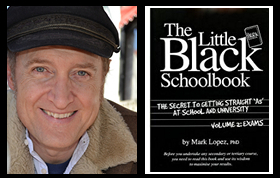Dr Mark’s The Meaning in a Nutshell
Pat Barker, Border Crossing (2001)
Seemingly inspired by the media frenzy and public hysteria that followed the murder of the two-year-old toddler James Bulger by two ten-year-old boys in northern England in 1993, Pat Barker’s novel Border Crossing (2001) represents and attempt (in a fictional context) to psychologically explore and understand the ethically confronting issues around children who kill. Barker, who seems to be guided by a liberal social conscience, seeks to dispel the notion that it is the ‘evil’ nature of children who kill that is the principal causal factor for their crimes. She also rejects the notion of personal responsibility in regards to these criminal children whom she believes cannot be treated by the courts in the same way as criminal adults. She then argues that negative social conditioning is the principal cause of this social problem, thereby encouraging her readers to see the perpetrators as victims.
Barker argues that children who commit major crimes are usually the victims of physical or sexual abuse by parents or others. They may also have suffered from abandonment or other acts of what seem to these children to be betrayal by parents or other trusted adults. In addition, they may have been conditioned to be potentially violent by the deprivations of poverty or by the challenges of surviving in tough, violent neighbourhoods. They may also have been exposed to watching violent films, or encouraged to subscribe to macho, militaristic, aggressive concepts of masculinity. This can involve playing with toy soldiers, or playing with real guns, or engaging in the hunting and killing of animals, all of which can serve to desensitise children to acts of extreme violence and to initiate them into the practice of killing. Barker implies that it is those who are responsible for conditioning children in these ways who are the true villains. Barker also indicts the courts for their insensitivity regarding the psychological complexities surrounding the accused children. She also argues strongly for correctional institutions to pursue rehabilitation rather than punishment. In addition, she argues in favour of the rights of prisoners and for a parole system intended to foster the successful re-integration of ex-convicts into the community.
Barker’s novel also celebrates the role that psychologists can play as social workers who can treat these criminal children. The novel promotes Freudian psychoanalysis (or the ‘talking cure’) as the means to address the antecedent traumas and anxieties that led to the anti-social behaviour. The novel presents a detailed psychoanalysis of the character Danny Miller, the child who committed a murder. The novel also presents psychoanalytical insights into his psychologist, Tom Seymour. This seems intended to invite the audience to see the value of psychoanalysis in understanding the behaviours of both disturbed and comparatively normal people. This comparison is, on occasions, used in the novel to imply that the distance between normal and criminal responses to anxiety can be slight. The novel also puts forward the opinion that there is only a thin line, or border, between criminal behaviour and non-criminal or immature behaviour. This border can be crossed or remain uncrossed due to the impact of unusual circumstances or chance.
Barker’s deliberate use of ambiguity regarding the apparent success of Danny Miller’s rehabilitation seems intended to establish that Danny Miller required additional psychological treatment before he could be successfully re-integrated into society, which, due to unfortunate circumstances, was not forthcoming. In this manner, Barker seems to be making a case for additional resources to be put into the psychological treatment of criminals.
Parallel to Barker’s exploration of the nature of children who commit major crimes is the subtheme involving her analysis of the cycle of marital breakdown involving the marriage of the psychologist Tom Seymour and his wife Lauren. On occasions, Barker uses the psychological dimensions of this subtheme to throw additional light on her principal theme regarding the nature of children who kill. Psychological pressures can produce a range of outcomes, including the inability to sustain a relationship or behaviour that is on the wrong side of the law. However, the study of the marital breakdown of Tom and Lauren Seymour can be appreciated as a distinct subtheme with its own intrinsic value. The matters covered include conflicts over shared goals and underlying doubts about compatibility. The novel outlines the successive stages of increased doubt, discord and disconnection that eventually reach a point of being irreversible. Following this, the novel looks at the procedures by which a couple disentangles to again become two individuals.
Student resources by Dr Mark Lopez
© Mark Lopez 2021 All RIGHTS RESERVED
The purpose of the concise notes of Dr Mark’s The Meaning in a Nutshell is to provide much needed help to students seeking to unlock the meaning of the texts with which they have to deal. (More elaborate notes are provided in lessons as part of my private tutoring business.)
Subject: Border Crossing meaning, Border Crossing themes, Border Crossing analysis, Border Crossing notes
